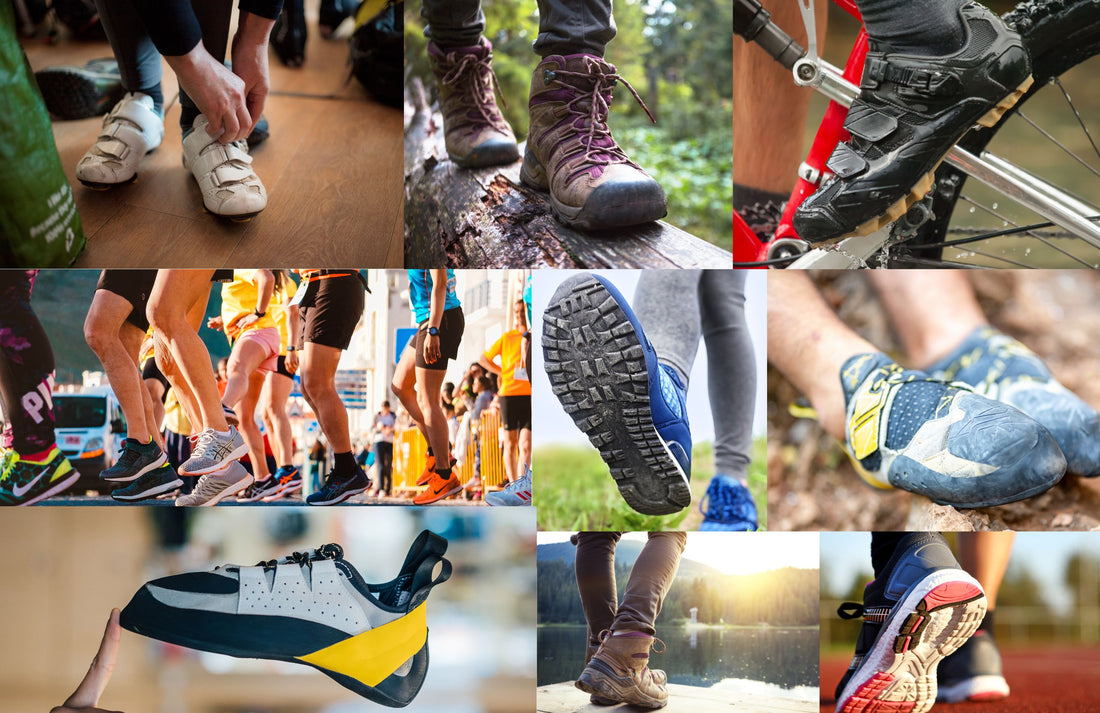
How to Choose the Right Shoes for Every Outdoor Adventure: A Practical Guide
Share
When preparing for outdoor adventures, selecting the right footwear can make or break your experience. Whether you’re hiking, cycling, or trekking, the right shoes provide support, comfort, and protection. Here’s a detailed guide to help you choose the best shoes for each activity, along with some recommendations. Plus, learn how BERT shoes can help you recover and stay comfortable before and after your adventure.
1. Hiking Shoes
When hiking, especially on rugged trails, your footwear must offer a balance of durability, comfort, and protection.
Key Features:
- Grip and Traction: Look for shoes with deep lugs on the sole for better grip, especially on rocky or uneven terrain.
- Ankle Support: For hikes on rough trails or with heavy backpacks, mid or high-ankle boots provide extra support.
- Waterproofing: If you’re hiking in wet environments, consider shoes with Gore-Tex or other waterproof materials.
- Comfortable Cushioning: To prevent foot fatigue during long hikes, cushioning in the midsole is crucial.
Recommendations:
- Salomon X Ultra 4 Mid GTX: A lightweight, waterproof hiking boot that offers excellent traction and support, ideal for day hikes or multiday treks.
- Merrell Moab 2 Waterproof: A solid, versatile option known for its comfort and durability on trails.
2. Cycling Shoes
Cycling demands shoes that provide a snug fit, proper power transfer, and breathability. Whether you’re into road biking or mountain biking, the right pair of cycling shoes can make a huge difference.
Key Features:
- Stiff Soles: A stiffer sole improves power transfer, allowing more efficient pedaling.
- Clipless Compatibility: If you use clip-in pedals, make sure your shoes are compatible with the system.
- Breathability: Mesh panels or ventilation ensure airflow to keep your feet cool.
- Weight: Lightweight shoes reduce the strain during long rides.
Recommendations:
- Shimano RC5 Road Shoes: Lightweight with a stiff sole, ideal for road cyclists looking for maximum efficiency.
- Five Ten Freerider Pro: Designed for mountain bikers, these shoes provide excellent grip and durability.
3. Trekking Shoes
Trekking involves walking long distances over varied terrains, often in unpredictable weather conditions. Shoes need to be durable, supportive, and adaptable to handle different landscapes.
Key Features:
- Durability: High-quality materials ensure that your shoes can withstand rough conditions over long periods.
- Cushioning and Support: A well-cushioned midsole is essential for shock absorption during extended treks.
- Waterproof yet Breathable: Keeping your feet dry while allowing ventilation to prevent blisters is a must.
Recommendations:
- La Sportiva Nucleo High GTX: A highly durable trekking boot with Gore-Tex lining for waterproofing and comfort over long distances.
- The North Face Hedgehog Fastpack GTX: A lightweight yet durable option, perfect for shorter treks and diverse terrain.
4. Trail Running Shoes
For trail running, footwear needs to offer protection, flexibility, and traction on unpredictable surfaces.
Key Features:
- Cushioning: Running on trails demands extra cushioning to protect against the impact of uneven surfaces.
- Flexibility: The shoe should allow for a natural range of motion while also providing support.
- Traction: Aggressive tread patterns improve grip on loose, wet, or rocky terrain.
Recommendations:
- Hoka One One Speedgoat 4: Known for its comfort and cushioning, this shoe is great for long-distance trail running.
- Salomon Sense Ride 4: Provides excellent grip and comfort, ideal for runners tackling technical terrain.
Choosing the right shoes for your adventure is essential for both performance and safety. But don’t forget—technical gear, including footwear, is designed to excel in a specific activity and not to be worn out doing something else. That's why our BERT shoes exist. We provide the comfort and support you need before and after any activity requiring specialized footwear, allowing you to fully enjoy your outdoor adventures without foot fatigue.




